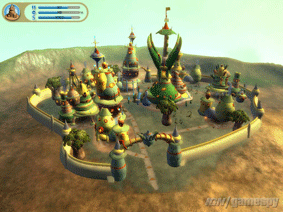Games
This link is an article written by Frans Mäyrä (homepage and blog) at the University of Tampere in Finland. He discusses pervasive gaming in the context of Johan Huizing's Homo Ludens, written in 1938, about games:
He summarised the formal characteristics of play by defining it as a free activity which is outside ordinary life, is not connected to our everyday material interests, and yet – and perhaps exactly because of this liberating 'escapism' – can absorb us intensely and utterly.
Mäyrä also points to something that Jesper Juul's 'Half Real' book focuses on - the fact that although games are 'free activities', they are still governed by rules, and the importance of this tension between being bound by rules, and yet being free to choose and to play. This is very important. It is why games are important (e.g. one can make mistakes without it being critical) and immersive. I think people who dismiss computer games are often people who have not played them themselves, and see gameplay as being a waste of time or a 'lesser' activity than other activities, and as being frivolous by their very nature, and thereby not worthy of serious study.
(This has somehow led me to an article on RFID tags, explaining how they work, and how they can be used for people-tracking. The article mainly deals with security and contacting people at large events, but as it also suggests that it is much better than GPS - partly because it can work inside - and so has got to be worth a close look for using with Mobile Bristol.)
Mäyrä briefly discusses 'social gaming' as well, and this idea is an aspect of what my own project is based around. I like the sound of the game 'Songs of North' [sic] he mentions, where the mobiel device becomes a window into another reality, populated by spirits and the like. As I've also discovered, however, the screen is not really the best way of engaging the user, but rather, 'the game immerses players into a rich audio world where wolves howl and eagles screech', through a hands-free headset, with the device taking second place.
He finishes (no pun intended) by noting both the "utopia of a distributed creative agency of thousands of game players communicating and interacting with each other via inspirational game worlds that are also intimately linked with the local and bodily realities of these individuals and communities, and
"The dystopian alternative, on the other hand, warns us about a world in which it is impossible to distinguish between emergency calls and ruses of warring virtual tribes, and where school, work and sleep are affected as day and night are invaded by never-ending and perpetually present games."
I've also been reading about the 'Girls n Games' conference. Two interesting anecdotes told by Mary Flanagan to do with girl gamers: girls wrote to the developers of Harry Potter to ask to be able play the character of Hermione, and Grand Theft Auto is very popular amongst 10 year-old girls, who like to drive around in cars, exploring this virtual world, rather than undertake the tasks. This suggests that gamers want to identify with their character, as they would with a character in a TV programme, a film or a novel, and that different people can have very different experiences of virtual worlds.
Really useful research and comments on player-centered game design here .
Going Mobile column on Gamasutra. This one mostly about top games companies in mobile games. Not so much about pervasive gaming though.
He summarised the formal characteristics of play by defining it as a free activity which is outside ordinary life, is not connected to our everyday material interests, and yet – and perhaps exactly because of this liberating 'escapism' – can absorb us intensely and utterly.
Mäyrä also points to something that Jesper Juul's 'Half Real' book focuses on - the fact that although games are 'free activities', they are still governed by rules, and the importance of this tension between being bound by rules, and yet being free to choose and to play. This is very important. It is why games are important (e.g. one can make mistakes without it being critical) and immersive. I think people who dismiss computer games are often people who have not played them themselves, and see gameplay as being a waste of time or a 'lesser' activity than other activities, and as being frivolous by their very nature, and thereby not worthy of serious study.
(This has somehow led me to an article on RFID tags, explaining how they work, and how they can be used for people-tracking. The article mainly deals with security and contacting people at large events, but as it also suggests that it is much better than GPS - partly because it can work inside - and so has got to be worth a close look for using with Mobile Bristol.)
Mäyrä briefly discusses 'social gaming' as well, and this idea is an aspect of what my own project is based around. I like the sound of the game 'Songs of North' [sic] he mentions, where the mobiel device becomes a window into another reality, populated by spirits and the like. As I've also discovered, however, the screen is not really the best way of engaging the user, but rather, 'the game immerses players into a rich audio world where wolves howl and eagles screech', through a hands-free headset, with the device taking second place.
He finishes (no pun intended) by noting both the "utopia of a distributed creative agency of thousands of game players communicating and interacting with each other via inspirational game worlds that are also intimately linked with the local and bodily realities of these individuals and communities, and
"The dystopian alternative, on the other hand, warns us about a world in which it is impossible to distinguish between emergency calls and ruses of warring virtual tribes, and where school, work and sleep are affected as day and night are invaded by never-ending and perpetually present games."
I've also been reading about the 'Girls n Games' conference. Two interesting anecdotes told by Mary Flanagan to do with girl gamers: girls wrote to the developers of Harry Potter to ask to be able play the character of Hermione, and Grand Theft Auto is very popular amongst 10 year-old girls, who like to drive around in cars, exploring this virtual world, rather than undertake the tasks. This suggests that gamers want to identify with their character, as they would with a character in a TV programme, a film or a novel, and that different people can have very different experiences of virtual worlds.
Really useful research and comments on player-centered game design here .
Going Mobile column on Gamasutra. This one mostly about top games companies in mobile games. Not so much about pervasive gaming though.










